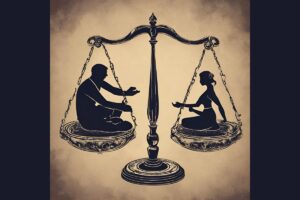Creativity is often thought of as a mysterious process that only certain people possess, but in reality, it’s a systematic process that anyone can learn and develop. Many people believe that creativity is an elusive quality, reserved for a select few who are blessed with innate talent. However, this couldn’t be further from the truth. Creativity is not a mysterious process; it’s a systematic process that can be learned and developed like any other skill.
The creative process involves several key steps: preparation, incubation, insight or illumination, evaluation, and implementation. Each of these steps requires different skills and approaches to problem-solving. Preparation involves gathering information and knowledge about the topic at hand. This could involve researching similar projects or brainstorming ideas with colleagues or team members.
Incubation is the stage where you step away from your work and let your mind wander freely. It’s important to take breaks during this phase to allow your brain time to make connections subconsciously.
Insight or illumination occurs when you have an “aha” moment – when everything suddenly clicks into place. This can happen spontaneously but can also be encouraged by actively seeking out new perspectives on the problem at hand.
Be Systematic in assessing your ideas in terms of creativity and setting up systems
Implementation is all about putting your ideas into action through planning and execution. By breaking down the creativity process into these distinct stages, we see that creativity isn’t just some mysterious ability possessed by only a select few individuals. It’s something anyone can learn through practice and dedication. With patience and persistence in applying each step of this systematic approach to creativity in our daily lives as writers/bloggers/creatives/etc., we too can become more innovative thinkers capable of generating fresh ideas consistently over time!
The first step in the creative process is to gather information and research the topic you want to create. This could involve reading books or articles, watching videos or documentaries, talking to experts in the field, etc.
Once you have gathered all the necessary information, it’s time to start analyzing and synthesizing it. This involves breaking down the information into smaller parts, identifying patterns and connections between them, and finding ways to combine them in new and interesting ways.
The next step is brainstorming. This is where you generate as many ideas as possible without worrying about whether they are good or not. The goal is to come up with a wide range of possibilities that can then be refined later on.
After brainstorming comes idea selection. This involves evaluating each idea based on its feasibility, originality, relevance to the topic at hand, etc., and selecting those that are most promising.
Once you have selected your ideas, it’s time to refine them further through prototyping or experimentation. This could involve creating sketches or mockups of your idea. Testing it out in a small-scale setting before scaling up if necessary.
Be strategic with setting up your systematic strategy
Finally comes implementation – turning your refined idea into a finished product or project. This could involve writing an article like this one we’re discussing now. Creating artwork; designing a website; developing software code; building physical prototypes…the possibilities are endless!
Creativity may seem mysterious at first glance. But when broken down into systematic steps anyone can learn how to be creative! By gathering information and researching topics thoroughly followed by analysis and synthesis of data points leads us towards brainstorming. Which helps us generate multiple ideas from which we select our best options for refinement through experimentation. Leading us towards the final stage of implementation.
It’s worth noting that creativity is not always an individual effort; collaboration with others can lead to even more innovative solutions since diverse perspectives bring new insights into any problem-solving situation.
With your chosen idea(s), you can then start developing and refining them through various techniques such as mind mapping, sketching/drawing/writing drafts until you come up with a final product that meets your goals. Throughout this entire process of gathering information, brainstorming ideas and developing them into a final product requires discipline and persistence rather than relying solely on inspiration or talent alone.
Creativity may seem like an elusive concept reserved for “creative types,” but by following these systematic steps anyone can tap into their own creative potential regardless of their background or experience level
Join me on a journey of self-discovery and explore practical spirituality, productivity, and metaphysical principles to help create our best lives by balancing spiritual growth and manifestation. Join our Mindful Mastery Newsletter!





